Main story: Price of rebuilding Anderson Dam balloons to $1.2 billion
Several factors have led to the rising cost of the project including inflation and worker shortage
![]()
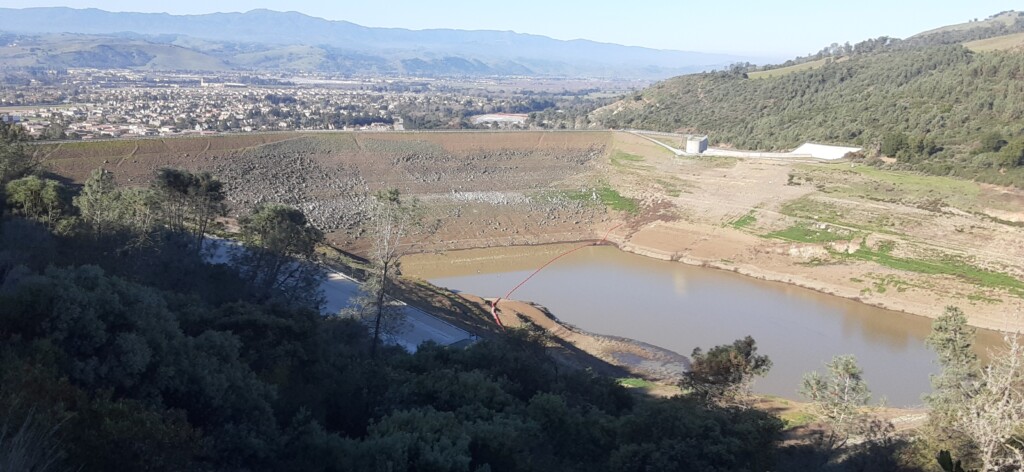
Photo by Marty Cheek
Anderson Dam, looking west, has doubled in price and is now scheduled to be completed in 2030. Ground broke on a new outlet tunnel last summer.
By Marty Cheek and Robert Airoldi
The price tag to build a new Anderson Dam just nearly doubled. Valley Water last month announced the cost of the project has gone from $648 million to $1.2 billion.
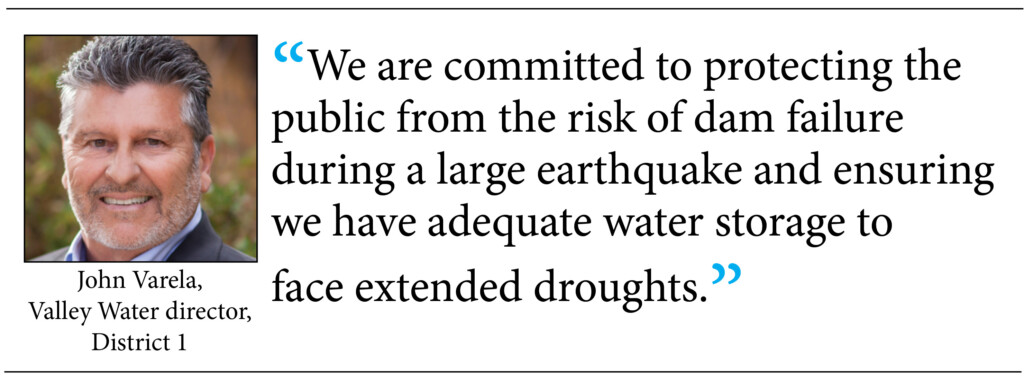 The dramatic increase is attributed to various factors, said Matt Keller, Valley Water spokesperson. They include new requirements from Federal Energy Regulatory Commission, splitting this project into two parts, which extends the time completion length, and new environmental regulatory requirements. The impact of inflation and worker shortages also drove costs up.
The dramatic increase is attributed to various factors, said Matt Keller, Valley Water spokesperson. They include new requirements from Federal Energy Regulatory Commission, splitting this project into two parts, which extends the time completion length, and new environmental regulatory requirements. The impact of inflation and worker shortages also drove costs up.
The Anderson Dam Seismic Retrofit Project was started with the intention to prevent a massive flooding of South Valley and locations in the north if a major earthquake were to destroy the dam. The project is expected to take 10 years to complete. It has expanded three times since it began in 2012.
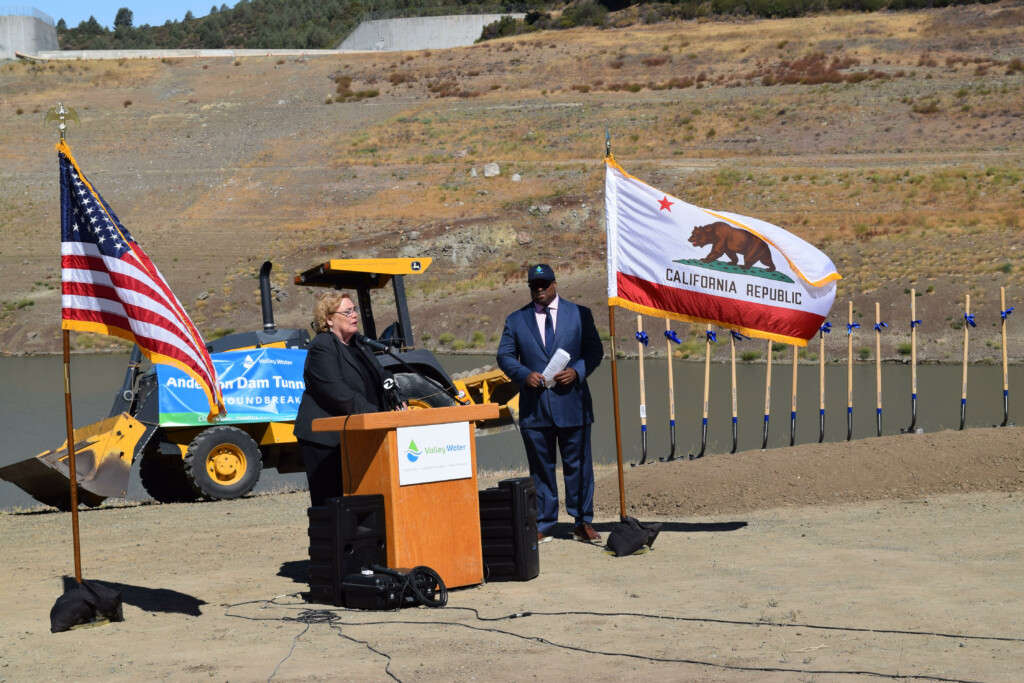
Photo by Kaylee Arca
Congresswoman Zoe Lofgren (D – San Jose) and Valley Water Chief Executive Officer Rick Callender during the July 7 groundbreaking ceremony launching the seismic retrofit project of Anderson Dam.
Work is underway with the first few years spent building a new outlet tunnel to allow a greater amount of water to be released into Coyote Creek. That is scheduled to be finished in 2024. Following that, the next 7 to 8 years will see the complete rebuild of the dam, which was originally built in 1950.
The cost of the project will be paid mostly through customers’ water rates but other sources will also be used, Keller said.
“Valley Water is working with our partners and rigorously pursuing state and federal grants to help subsidize this project and reduce the impact on ratepayers,” he said. “The project was also voter-approved as part of the Safe, Clean Water, and Natural Flood Protection Program, with $54.1 million in total available funding.”
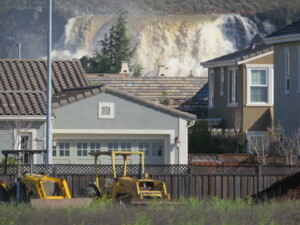
Gilroy Life file photo
Water flows over the spillway of Anderson Dam after heavy rains drenched the South Valley in February 2017.
Regardless of the cost of building a new Anderson Dam, the project is important to provide a reliable source of water for the nearly two million people residing in Santa Clara County, said John Varela, the Valley Water board member representing District 1, which includes Morgan Hill, San Martin and Gilroy.
“It’s critical that we finish our work at Anderson Dam, which remains Valley Water’s top priority,” he said. “We are committed to protecting the public from the risk of dam failure during a large earthquake and ensuring we have adequate water storage to face extended droughts. Valley Water’s work at Anderson Dam will protect our communities and our regional water supply for generations to come.”
Anderson Reservoir sits atop two fault lines. Experts estimate a magnitude 7.25 earthquake on the Calaveras Fault centered less than 1.25 miles from the dam, or a magnitude 6.6 earthquake on the Coyote Creek Fault centered beneath the dam, could significantly damage the embankment and lead to failure and a massive flood. If the reservoir were to be full, this wall of water could kill thousands of people and destroy homes and other property. Such a catastrophe is not possible now because at the end of 2020 the dam was drained to 3 percent of its capacity.
The FERC ordered Valley Water to drain Anderson Reservoir starting Oct. 1, 2020. Valley Water drained it to 3 percent of its capacity. It will remain at this level during the tunnel’s construction. Water will then be completely drained for five more years as the wall of the dam is dismantled and rebuilt.
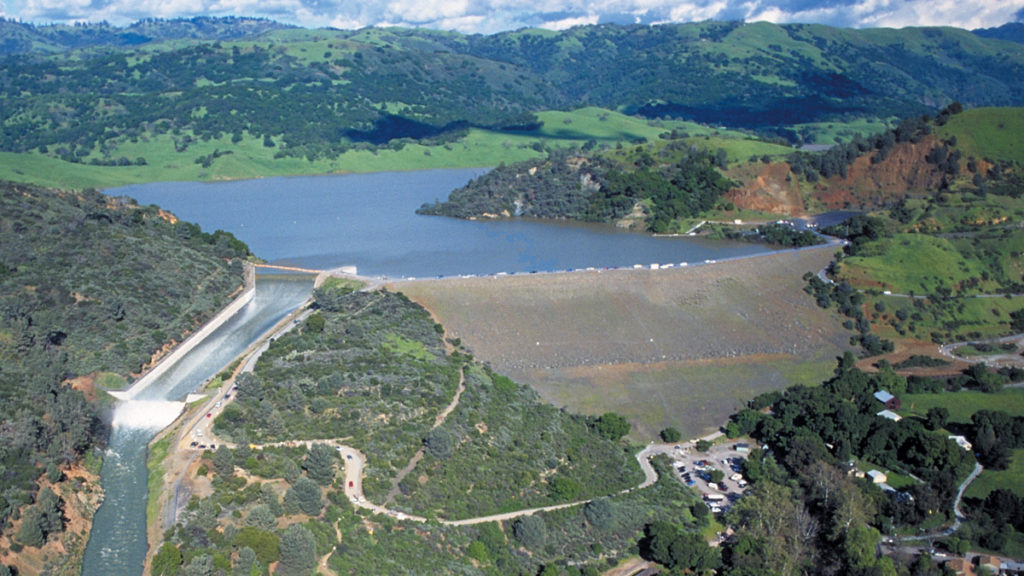 Anderson Reservoir is the largest in Santa Clara County and can hold about 90,000 acre-feet of water. When full, it can supply nearly one million people with water for a year.
Anderson Reservoir is the largest in Santa Clara County and can hold about 90,000 acre-feet of water. When full, it can supply nearly one million people with water for a year.
Valley Water faces challenges supplying its customers as California now faces another year of a major drought and the loss of Anderson Reservoir to store water for the next 10 years. Its engineers have found ways to make sure water is supplied to its customers, the various cities in the county. These include moving along with recycled water projects and using recharge groundwater aquifers. Valley Water also intends to start purchasing more imported water from other regions of the state with a budget of $20 million. However, the rest of drought-stricken California is also chasing down water supplies so the water district must work around regulations and share water supplies with other counties.
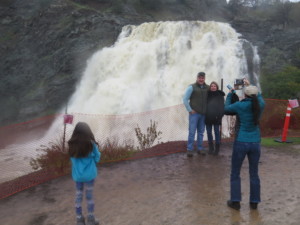 Using water more prudently can also help in making sure Santa Clara County residents and businesses have enough water.
Using water more prudently can also help in making sure Santa Clara County residents and businesses have enough water.
“Conservation is a way of life. Recycled water is a way of life,” Valley Water CEO Rick Callender said. “We have to fix the dam and get it done.”
A long-term measure to ensure Santa Clara County has enough water is the proposed expansion of Pacheco Dam on the North Fork of Pacheco Creek about two miles east of Casa de Fruta on Highway 152.
The dam was built in 1939 and its reservoir’s capacity is 5,500 acre-feet. The much larger reservoir sizes being considered include a 140,000-acre foot reservoir located at both sites, and a 96,000-acre-foot reservoir located at the upstream site of a 320-foot-high earthen dam built into the rural canyon terrain.
Last year, Valley Water announced the Pacheco Reservoir Expansion project’s estimated cost rose from about $1.3 billion to $2.5 billion. The agency is exploring four different dam alternatives, each with a different cost estimate. One of the options could reduce the cost by about $400 million.
 In mid-December, the plan to build a new Pacheco Dam passed an important milestone when the California Water Commission ruled the project is feasible and qualifies for $496 million in state funding from Proposition 1 that voters approved in 2014.
In mid-December, the plan to build a new Pacheco Dam passed an important milestone when the California Water Commission ruled the project is feasible and qualifies for $496 million in state funding from Proposition 1 that voters approved in 2014.
The project, however, faces opposition from a newly formed group called the Stop the Pacheco Dam Project coalition. They argue that in addition to the financial burden on ratepayers and taxpayers, the construction of this project would permanently destroy the local environment — driving out wildlife and causing irreparable damage to biologically, historically, and culturally significant lands.
 “Lowering the cost of living should be the primary focus of every public official in Santa Clara County,” said coalition member and economics doctorate Jeffrey Michael. “Instead, Valley Water is considering committing billions of ratepayer dollars to a dam its own staff describes as the costliest and riskiest option in their master plan.”
“Lowering the cost of living should be the primary focus of every public official in Santa Clara County,” said coalition member and economics doctorate Jeffrey Michael. “Instead, Valley Water is considering committing billions of ratepayer dollars to a dam its own staff describes as the costliest and riskiest option in their master plan.”
